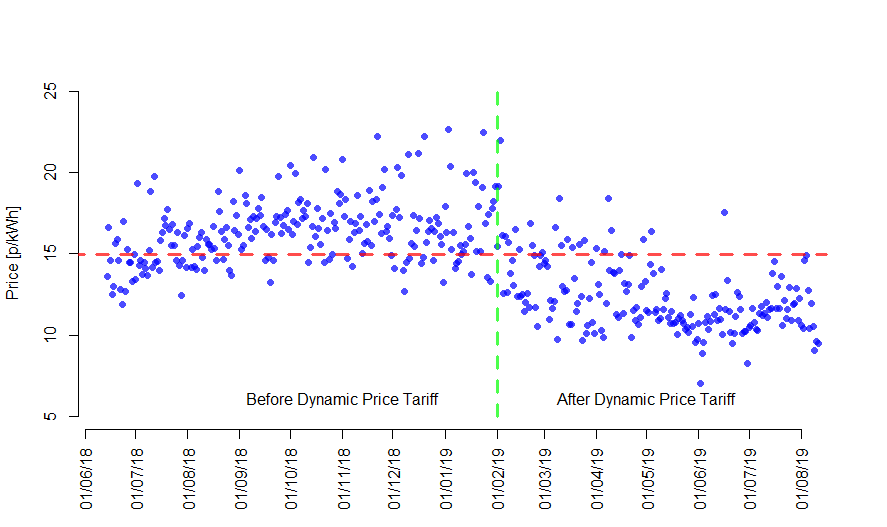Did we look at the prices every day? No! Did we avoid using energy intensive appliances between 4pm and 7pm? Yes! Below you can see the impact on our effective unit rate each day. From a fixed rate around 15p/kWh we were down to just over 12p/kWh once we adapted our routine. See graph below.
Could this kind of tariff help reduce the evening peak in national demand if enough consumers signed up? Or would we end up with a sharper peak at 7:01pm?


 RSS Feed
RSS Feed